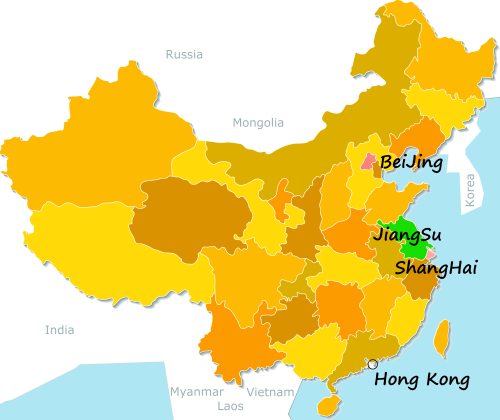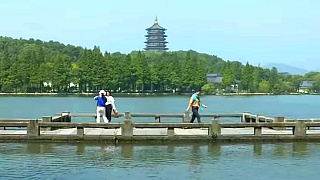
|
With This Is SiChuan ...
Mount Emei Visitor Guide: Natural Beauty & Practical Travel Tips
Mount Emei (Emei Shan), located in Sichuan Province, is one of China's Four Sacred Buddhist Mountains and a UNESCO World Heritage Site. With its mist-shrouded peaks, ancient temples, rich biodiversity, and cultural significance, it is a popular pilgrimage site and a destination for nature lovers and history enthusiasts. This guide will help you explore Mount Emei’s natural beauty while providing practical travel advice for a seamless visit.
Golden Summit (Jinding)
Overview: The Golden Summit is the highest point on Mount Emei, offering spectacular views, including the famous "Sea of Clouds." At an elevation of 3,077 meters, the summit is a spiritual hub for Buddhists, with the massive statue of Samantabhadra Bodhisattva serving as a highlight for visitors.
Key Highlights:
Golden Buddha Statue: The 48-meter tall statue of Samantabhadra Bodhisattva with ten faces is a stunning work of art, representing the mount's spiritual significance.
Sea of Clouds: On clear mornings, you can witness the mesmerizing "Sea of Clouds" phenomenon, where the clouds form a dense layer beneath the summit.
Sunrise & Sunset: Watching the sunrise or sunset from the Golden Summit is a breathtaking experience, as the sky turns vibrant shades of orange and pink.
Travel Tip: Be prepared for the altitude by wearing warm clothing, especially in the early morning or evening. It’s recommended to take the cable car from Leidongping to save energy, but hikers can also make the journey on foot.
Baoguo Temple Area
Overview: Baoguo Temple is the starting point for most visitors to Mount Emei. Located at the base of the mountain, this area is home to one of the most important temples and serves as a hub for those preparing to explore the mountain.
Key Highlights:
Baoguo Temple: Built during the Ming Dynasty, this temple is dedicated to the worship of various Buddhist deities. It is an excellent place to start learning about the religious history of Mount Emei.
Emei Buddhist Cultural Museum: Located within the temple grounds, this museum provides insight into the history of Buddhism in the region, along with relics and artwork.
Travel Tip: Baoguo Temple is a peaceful place to begin your ascent. The surrounding area has plenty of accommodation options for all budgets, making it a convenient base for longer stays.
Wannian Temple (Ten-Thousand-Year Temple)
Overview: One of the oldest and most significant temples on Mount Emei, Wannian Temple dates back over 1,600 years. The temple is perched on the mountainside and offers great views as well as a peaceful environment for meditation and reflection.
Key Highlights:
Bronze Statue of Samantabhadra Bodhisattva: The temple houses a famous bronze statue of Samantabhadra riding an elephant, which is a major draw for pilgrims.
Surrounding Trails: The area around Wannian Temple is filled with scenic trails that offer opportunities to explore the mountain’s flora and fauna.
Travel Tip: Visitors can either hike to Wannian Temple or take the cable car from Wuxiangang Parking Lot. The trails offer stunning views but can be steep, so bring appropriate footwear.
Qingyin Pavilion
Overview: Qingyin Pavilion is a tranquil spot located halfway up Mount Emei, offering a place for rest and meditation. Surrounded by lush forests, clear streams, and waterfalls, it is an ideal location to experience the natural beauty and serene atmosphere of the mountain.
Key Highlights:
Scenic Bridges: The twin bridges crossing the crystal-clear waters are perfect for photos, and the sound of the running stream adds to the pavilion’s peaceful ambiance.
Washing Elephant Pool: Located nearby, this sacred pool is associated with Buddhist mythology and is a quiet spot for reflection.
Travel Tip: This is an ideal resting spot for those hiking up the mountain. There are small tea houses nearby where you can relax and enjoy the scenery. Consider visiting early in the morning to avoid crowds.
Monkeys of Mount Emei
Overview: The Tibetan macaques are a famous and sometimes mischievous presence on Mount Emei. These monkeys roam freely across the mountain and are often found near tourist areas. While they can be entertaining to watch, visitors should take care as the monkeys may attempt to snatch food or belongings.
Key Highlights:
Monkey Eco-Zone: Located along the main hiking trail, this area is where the monkeys are most active. Visitors can observe them up close but should avoid direct interaction.
Travel Tip: Keep your belongings secure and do not feed the monkeys, as they can become aggressive. Stick to designated paths and follow the advice of local guides or staff to stay safe.
Practical Travel Information for Mount Emei
When to Visit
The best time to visit Mount Emei is from April to October, when the weather is mild, and the views are clear. Spring (April-May) offers blooming flowers, while autumn (September-October) provides colorful foliage. Winter visits are also possible, especially for those interested in snow-covered landscapes, but be prepared for cold conditions at higher altitudes.
Getting to Mount Emei
By Air: The closest airport is Chengdu Shuangliu International Airport, located about 150 kilometers away. From Chengdu, visitors can take a train or bus to Emeishan City.
By Train: The high-speed train from Chengdu to Emeishan Station takes about 1.5 hours. From the station, visitors can take a local bus or taxi to the Baoguo Temple area, the starting point for exploring Mount Emei.
By Bus: Regular buses run from Chengdu’s Xinnanmen Bus Station to Emeishan City, with a journey time of approximately 2 hours.
Accommodation
Visitors can stay in Emeishan City or in the Baoguo Temple area, which has a variety of accommodations, including hotels, guesthouses, and hostels. For those wishing to stay on the mountain itself, there are guesthouses and monasteries offering simple lodging for a more immersive experience. Booking in advance is recommended during peak seasons.
Cultural Sensitivity
As Mount Emei is a sacred Buddhist site, visitors should show respect when visiting temples and monasteries. Modest clothing is recommended, and it’s important to be mindful of local customs, especially when interacting with monks or pilgrims. Refrain from taking photos in sacred spaces unless permission is explicitly granted.
Food and Dining
Sichuan cuisine is renowned for its bold, spicy flavors. In Emeishan, you can find local dishes such as hotpot, mapo tofu, and various noodle dishes. For a unique experience, try the vegetarian meals offered at the mountain's temples, which are simple yet flavorful and often include locally sourced ingredients.
Important Note: Always carry your passport and tickets when visiting the mountain, especially for entrance to the different scenic areas and cable cars.
Suggested Itinerary for Exploring Mount Emei
Day 1: Arrive in Emeishan City, visit Baoguo Temple, and relax in the hot springs nearby.
Day 2: Hike or take the cable car to the Golden Summit for sunrise. Explore the summit area before descending to Wannian Temple.
Day 3: Spend the day exploring Qingyin Pavilion and the Monkey Eco-Zone. Enjoy a tea break at a mountain tea house before returning to Emeishan City.
|

 A trip to the Gardens of SuZhou 苏州 old town, JiangSu province
A trip to the Gardens of SuZhou 苏州 old town, JiangSu province





